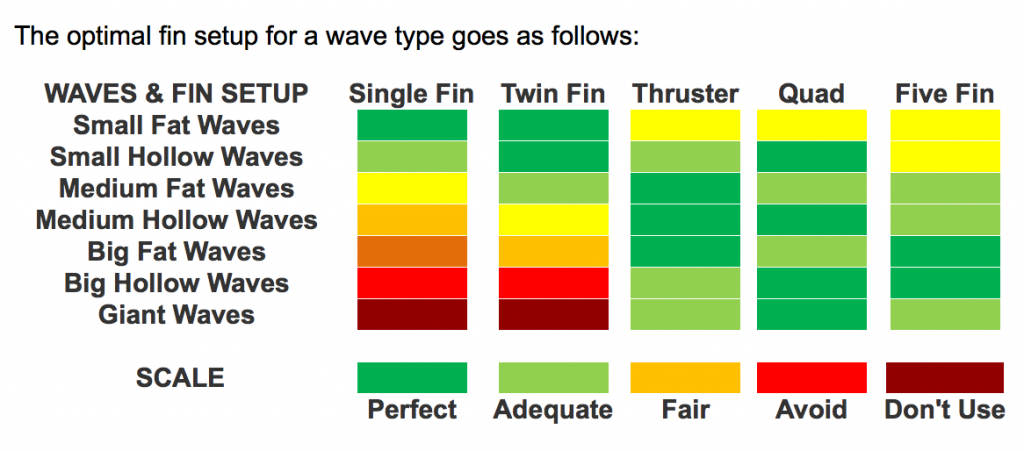The ocean is a fickle mistress, and as such, surfers must be able to adapt their equipment to best match her moods in order to get the most from their surfing experience. At times, the sea offers up perfectly clean four-footers that peel off for as far as the eye can see. Other times, we paddle out into a soupy mess of whitewater and giant, inconsistent peaks. And then there are days when the sea decides to call in sick, causing your local beach break to more closely resemble a lake than the mighty, thunderous ocean. For each of these scenarios, surfers must come prepared with the board which will allow them to catch and ride as many waves as possible. What should also be considered is the fin setup and type of Surfboard fins that are being used in relation to the shape and size of the waves on a given day.
Fin Setups:
When trying to determine which of your surfboards you should be taking out for your dawn patrol or sunset session surf conditions, Surfer Today has an awesome little guide which has been summarized here:

- Small, fat waves are ideal for a single or twin fin, while a thruster, quad, or 5-fin bonzer are fair choices.
- Small, hollow waves lend themselves best to single, twin, thruster, and quad setups. Really, anything goes in these types of waves.
- Medium, fat waves are the perfect canvas for your thruster, but can also suit the other fin setups fairly well.
- Medium, hollow waves are when your quad and thruster will really shine, but not really the best conditions for your single or twin fin.
- Big, fat waves can best be attacked on a thruster, quad, or 5-fin bonzer.
- Big, hollow waves require something with some hold, ideally a quad of 5-finner.
- Giant waves are normally surfed on quads due to their combination of speed and hold, but thrusters can also work as well.
Selecting Your Fins
Once you’ve chosen the board you’ll be riding, you can further customize your surfing experience to match the wave conditions by changing out your fins (assuming you are using a removable fin system). Basically, fins with more depth or surface area provide more hold and stability in larger, hollower surf. Shorter fins with less surface area will give you better release and a looser feel, which is great for small, mushy surf, but will be lacking when it comes to drive and hold.